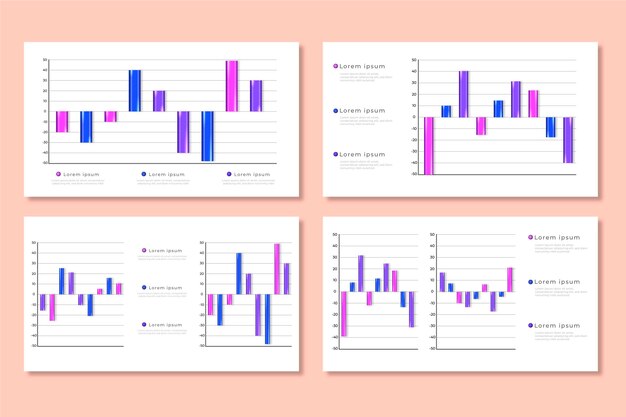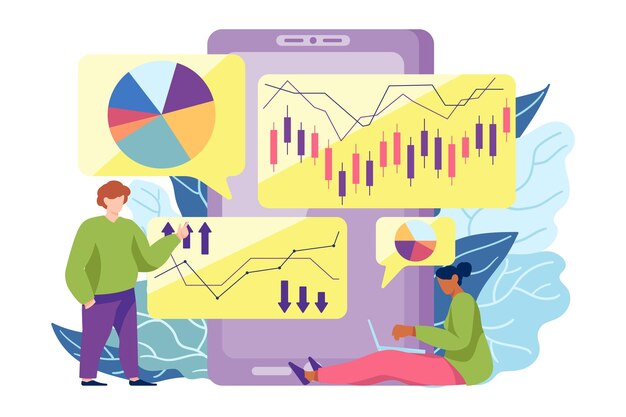Understanding the Reversal Candlestick Pattern – A Comprehensive Guide to Identifying and Trading Profitable Market Signals
Embarking on the journey to gain a comprehensive understanding of the financial markets can be both exciting and overwhelming. As aspiring traders venture into this intricate world, they soon encounter various tools and techniques that aid in deciphering market trends and making informed decisions. Among these powerful tools is the reversal candlestick pattern, a key element that holds the potential to unveil potential market reversals and provide valuable insights.
Reversal candlestick patterns, often regarded as the visual language of the market, utilize the language of price action to convey crucial information regarding potential changes in market sentiment. By closely observing the formations and patterns of candlesticks, traders immerse themselves in a realm of insight that can guide them towards profitable trading opportunities.
Within the dynamic realm of finance, the reversal candlestick pattern acts as a whisper from the market itself – a silent message waiting to be heard. Through its distinct formations, such as the hammer, shooting star, or engulfing pattern, these candlestick signals can serve as warning signs, enabling traders to anticipate market reversals and adjust their strategies accordingly.
The Importance of Identifying Reversal Patterns
Recognizing and understanding reversal patterns in candlestick charts is an essential skill for any trader or investor. These patterns provide crucial insights into potential changes in market direction, offering opportunities to capitalize on market reversals and make informed decisions.
1. Predicting Trend Reversals
By identifying reversal patterns, traders can anticipate the end of a trend and the beginning of a new one. Reversal patterns indicate that market sentiment is shifting, allowing traders to enter or exit positions at opportune moments. These patterns act as warning signals for potential trend changes, enabling proactive decision-making.
2. Enhancing Risk Management
Reversal patterns can significantly improve risk management strategies. By recognizing reversal signals, traders can adjust their risk exposure by tightening stop-loss orders or taking profits, minimizing potential losses. By incorporating these patterns into their trading strategies, traders can effectively manage risk and protect their capital.
In conclusion, comprehending and identifying reversal patterns is a crucial skill for traders and investors. By recognizing these patterns, traders can predict trend reversals and adjust their risk management strategies accordingly. Developing proficiency in spotting reversal patterns can lead to increased profitability and more successful trading decisions.
Key Reversal Candlestick Patterns Explained
In this section, we will delve into the intricacies of significant candlestick patterns that indicate potential reversals in the market. By understanding the various key reversal candlestick patterns, traders can gain valuable insights to make informed trading decisions.
To begin with, let’s explore the powerful engulfing pattern. This pattern occurs when a candle completely engulfs the previous candle, indicating a potential reversal in the opposite direction. The engulfing pattern can be bullish or bearish, providing valuable clues about market sentiment.
Another important pattern to watch out for is the doji pattern, which represents a state of uncertainty and indecision in the market. The doji has a small body with a long wick, indicating that buyers and sellers are in equilibrium. This pattern often signals a potential reversal, especially when it forms at key support or resistance levels.
Next, we have the hammer and hanging man patterns, which are both characterized by a small body and a long lower wick. The hammer pattern forms at the bottom of a downtrend, indicating a potential bullish reversal, while the hanging man pattern occurs at the top of an uptrend, hinting at a potential bearish reversal.
The shooting star pattern is another crucial reversal signal. It has a small body and a long upper wick, indicating that buyers initially pushed the price higher but eventually lost control, leading to a potential bearish reversal. Traders often look for this pattern after a strong uptrend.
Last but not least, we have the morning star and evening star patterns, which are three-candlestick formations. The morning star pattern consists of a bearish candle, followed by a small indecisive candle, and finally a bullish candle, indicating a potential bullish reversal. Conversely, the evening star pattern occurs in an uptrend and suggests a potential bearish reversal.
- Engulfing Pattern: An indication of potential reversal when one candle engulfs the previous one.
- Doji Pattern: Represents uncertainty and indecision in the market, often signaling a potential reversal at key levels.
- Hammer and Hanging Man Patterns: Small body, long lower wick; hammer at the bottom of a downtrend, hanging man at the top of an uptrend.
- Shooting Star Pattern: Small body, long upper wick; indicates potential bearish reversal after a strong uptrend.
- Morning Star and Evening Star Patterns: Three-candlestick formations; morning star indicates potential bullish reversal, evening star suggests potential bearish reversal.
By familiarizing oneself with these key reversal candlestick patterns, traders can enhance their understanding of market dynamics and improve their trading strategies.
How to Identify Reversal Patterns on a Candlestick Chart
In this section, we will explore the process of spotting reversal patterns on a candlestick chart. By carefully analyzing the price movement represented by the candlestick chart, traders can identify potential trend reversals and make informed trading decisions.
1. Analyzing Candlestick Shapes and Colors
One of the first steps in spotting reversal patterns is to analyze the shapes and colors of the candlesticks. Different candlestick patterns indicate bullish or bearish reversals. For example, a doji candlestick with a small body indicates indecision in the market and can signal a potential reversal. Similarly, a bearish engulfing pattern, characterized by a large bearish candle following a smaller bullish candle, suggests a potential trend reversal to the downside.
2. Assessing Support and Resistance Levels
Support and resistance levels are important factors to consider when identifying reversal patterns. Traders should look for patterns forming near these levels, as they can act as key areas of reversal. For instance, if a bullish reversal pattern forms near a strong resistance level, it suggests a potential trend reversal to the upside. Conversely, if a bearish reversal pattern forms near a well-established support level, it indicates a potential trend reversal to the downside.
3. Understanding Volume and Confirmation Signals
Volume plays a crucial role in confirming the validity of reversal patterns. Traders should analyze the volume associated with the candlestick patterns to gauge the strength of the potential reversal. An increase in volume during a reversal pattern indicates strong market participation and validates the potential trend reversal. Conversely, a lack of volume during a reversal pattern may suggest a weak reversal signal, requiring further confirmation before initiating a trade.
By combining an analysis of candlestick shapes and colors, support and resistance levels, and volume, traders can improve their ability to spot reversal patterns on a candlestick chart. Remember that it is always essential to confirm reversal patterns with other technical indicators or analysis methods before making trading decisions.
Analyzing Reversal Patterns for Effective Trading Strategies
In the realm of trading, understanding reversal patterns and their significance is crucial for implementing effective strategies. By examining these patterns closely, traders can gain valuable insights into market dynamics and develop profitable trading approaches.
Reversal patterns indicate potential shifts in market sentiment, highlighting periods of trend reversals or potential trend continuation. These patterns can vary in complexity, ranging from simple candlestick formations to more intricate chart patterns. By analyzing these patterns, traders can identify potential entry and exit points, as well as determine optimal stop-loss and take-profit levels.
One commonly observed reversal pattern is the double top, characterized by two consecutive peaks of similar height followed by a downward price movement. This pattern signifies a possible trend reversal from bullish to bearish and can be used by traders to initiate short positions or exit long positions.
Another reversal pattern is the bullish engulfing pattern, which occurs when a small bearish candle is followed by a larger bullish candle that engulfs it completely. This pattern suggests a shift from bearish to bullish sentiment and can be used by traders to enter long positions or exit short positions.
Additionally, the head and shoulders pattern is a significant reversal pattern that consists of three peaks, with the middle peak (the head) being higher than the other two (the shoulders). This pattern indicates a shift from bullish to bearish momentum and can be employed by traders to initiate short positions or exit long positions.
| Pattern | Description | Trading Strategy |
|---|---|---|
| Double Top | Two consecutive peaks followed by a downward price movement | Initiate short positions or exit long positions |
| Bullish Engulfing | Small bearish candle followed by a larger bullish candle that engulfs it completely | Enter long positions or exit short positions |
| Head and Shoulders | Three peaks, with the middle peak being higher than the other two | Initiate short positions or exit long positions |
It is important to note that analyzing reversal patterns should be done in conjunction with other technical indicators and tools to confirm potential trend reversals. Traders should also consider the overall market context, fundamental analysis, and risk management principles to develop comprehensive trading strategies.
By gaining a deep understanding of reversal patterns and incorporating them into their trading strategies, traders can increase their chances of making profitable trades and navigating the dynamic nature of financial markets.
Tips for Successful Trading Using Reversal Candlestick Patterns
In this section, we will explore valuable tips and strategies to enhance your trading success by utilizing the power of reversal candlestick patterns. By leveraging these patterns, traders can identify potential trend reversals in the market, allowing them to make informed and profitable trading decisions.
Understanding the Importance of Candlestick Patterns
Before diving into the tips and strategies, it is crucial to understand the significance of candlestick patterns in trading. Candlestick patterns provide valuable insights into market sentiment and can indicate potential trend reversals or continuations. By analyzing the combinations of candlestick shapes, sizes, and colors, traders can gain a deeper understanding of the market dynamics.
Tip 1: Recognize Key Reversal Candlestick Patterns
To become a successful trader using reversal candlestick patterns, it is essential to familiarize yourself with the key patterns and their interpretations. Some of the commonly observed reversal patterns include the engulfing pattern, hammer pattern, shooting star pattern, and doji pattern. Each pattern carries its own significance and understanding their implications can greatly enhance your trading decisions.
Engulfing Pattern: This pattern occurs when a candle completely engulfs the previous candle, indicating a potential reversal in the ongoing trend.
Hammer Pattern: The hammer pattern is characterized by a small body at the top with a long lower wick. It suggests a potential bullish reversal, especially when observed during a downtrend.
Shooting Star Pattern: The shooting star pattern is identified by a small body at the bottom and a long upper wick. It signifies a potential bearish reversal, particularly when seen after an uptrend.
Doji Pattern: The doji pattern occurs when the candle has almost equal opening and closing prices, resulting in a cross-like shape. It suggests indecision in the market and often indicates a potential reversal.
Tip 2: Confirm Reversal Patterns with Technical Indicators
While reversal candlestick patterns can provide valuable insights, it is crucial to confirm their signals with technical indicators. By combining candlestick analysis with other indicators like moving averages, RSI, or MACD, traders can strengthen their trading decisions and increase the probability of successful trades.
Tip 3: Practice Proper Risk Management
Risk management plays a vital role in successful trading. It is important to set appropriate stop-loss levels and determine position sizes based on your risk tolerance. By implementing proper risk management techniques, traders can protect their capital and minimize potential losses.
By incorporating these tips and strategies into your trading approach, you can harness the power of reversal candlestick patterns to improve your trading performance and increase your profitability. Remember to practice and refine your skills consistently to become a proficient trader in utilizing these patterns.
Questions and answers: Reversal candlestick pattern
What is a reversal candlestick pattern?
A reversal candlestick pattern is a technical chart pattern that indicates a potential reversal in the price trend of a financial asset. It consists of one or more candlesticks that show a shift in market sentiment, often leading to a change in the direction of the price movement.
How can I identify a reversal candlestick pattern?
To identify a reversal candlestick pattern, you need to look for specific candlestick formations on a price chart. Common reversal candlestick patterns include the hammer, shooting star, engulfing pattern, and doji. These patterns have distinct characteristics that can help you determine when a trend might be reversing.
What is the significance of a reversal candlestick pattern?
A reversal candlestick pattern is significant because it provides traders and investors with a potential signal to enter or exit positions. When a reversal pattern forms, it suggests that the previous trend is losing momentum and a reversal in the price direction might occur. Traders often use these patterns to make more informed trading decisions.
Are reversal candlestick patterns reliable?
While reversal candlestick patterns can be valuable indicators, they are not foolproof. It is important to consider other technical analysis tools, such as trendlines, support and resistance levels, and volume, to confirm the validity of a reversal signal. Additionally, market conditions and the overall trend should also be taken into account before making any trading decisions based on these patterns.
How can I incorporate reversal candlestick patterns into my trading strategy?
To incorporate reversal candlestick patterns into your trading strategy, you can use them as a confirmation tool alongside other technical indicators. For example, if a reversal candlestick pattern forms near a significant support level and is accompanied by an oversold condition on the relative strength index (RSI), it could strengthen the validity of a potential reversal. It is important to practice and test your strategy using historical data before applying it in live trading.
What is a reversal candlestick pattern?
A reversal candlestick pattern is a technical analysis tool used in trading to indicate a potential change in the trend of a security or market. It is formed by a specific arrangement of candlestick bars on a price chart, signaling a reversal of the current trend.
What are candlestick reversal patterns, and how do they indicate a potential change in price direction?
Candlestick reversal patterns are formations on price charts that suggest a potential reversal in the prevailing trend. They consist of one or more candlesticks and often signal shifts from bullish to bearish or vice versa.
Can you explain the characteristics of a bullish candlestick and how it contributes to reversal patterns?
A bullish candlestick typically has a long white body, indicating strong buying pressure. When it appears after a downtrend, especially as the first candle in a reversal pattern, it suggests a potential shift towards bullish sentiment.
What is the significance of the second candle in candlestick reversal patterns?
The second candle in candlestick reversal patterns plays a crucial role in confirming the reversal signaled by the first candle. Its appearance and relationship to the first candle provide insights into the strength and likelihood of the reversal.
How does a bullish abandoned baby pattern form, and what does it indicate?
A bullish abandoned baby pattern forms when a doji or small candlestick appears between two larger candlesticks, with a gap on both sides. It suggests a potential bullish reversal, especially if it occurs after a downtrend and is followed by further bullish price action.
What are the key characteristics of a bearish candlestick, and how does it contribute to reversal patterns?
A bearish candlestick typically has a long black body, indicating strong selling pressure. When it appears after an uptrend, especially as the first candle in a reversal pattern, it suggests a potential shift towards bearish sentiment.
Can you describe the bullish engulfing candlestick pattern and its role in reversal formations?
The bullish engulfing pattern occurs when a large bullish candlestick completely engulfs the previous smaller bearish candlestick. It signals a potential bullish reversal, especially if it appears after a downtrend and is accompanied by high trading volume.
What is the harami pattern, and how does it contribute to reversal analysis?
The harami pattern consists of two candlesticks, with the first being larger and the second smaller and contained within the body of the first. It suggests a potential reversal in the prevailing trend, with the second candle indicating indecision.
What are the limitations of candlestick reversal patterns in predicting future price movements?
While candlestick reversal patterns can provide valuable insights into potential trend reversals, they are not always reliable and can produce false signals. Additionally, they are most effective in short-term trading and may not accurately predict long-term trends.
How does the shooting star pattern contribute to bearish reversal analysis?
The shooting star pattern occurs when a small bearish candlestick with a long upper wick appears after an uptrend, indicating rejection of higher prices. It suggests a potential bearish reversal, especially if followed by further bearish price action.
Can you explain the importance of confirmation in candlestick reversal patterns?
Confirmation in candlestick reversal patterns refers to subsequent price action that validates the signal provided by the pattern. It helps traders distinguish between genuine reversals and false signals, enhancing the reliability of their trading decisions.
What is the significance of a white candlestick in candlestick reversal patterns?
A white candlestick represents a session where the closing price is higher than the opening price. In reversal patterns, a long white candlestick after a downtrend may indicate potential bullish sentiment and reversal.
How does the second candle contribute to confirming a reversal in candlestick patterns?
The second candle in reversal patterns validates the signal given by the first candle. Its appearance and relationship with the first candle provide insight into the strength and likelihood of the reversal.
What is a bullish abandoned baby pattern, and how does it signal a potential reversal?
A bullish abandoned baby pattern occurs when a doji or small candle appears between two larger candles with gaps on both sides. It suggests a potential bullish reversal, especially when it follows a downtrend and is followed by further bullish price action.
Can you explain the concept of a bearish abandoned baby pattern and its implication for reversals?
A bearish abandoned baby pattern forms when a doji or small candle appears between two larger candles with gaps on both sides. It indicates a potential bearish reversal, especially when it follows an uptrend and is followed by further bearish price action.
What is the significance of a long white candlestick in candlestick analysis?
A long white candlestick indicates strong buying pressure, especially when it appears after a downtrend. In reversal patterns, it may signal a potential bullish reversal and is often observed as the first candle in such formations.
How do engulfing candlestick patterns contribute to reversal analysis?
Engulfing candlestick patterns occur when a larger candlestick completely engulfs the previous smaller one. They suggest a potential reversal in the prevailing trend, with bullish engulfing patterns indicating potential bullish reversals and vice versa.
Can you describe the characteristics of a harami pattern and its relevance to reversal analysis?
A harami pattern consists of two candlesticks, with the second being smaller and contained within the body of the first. It suggests potential indecision in the market and may signal a reversal depending on its context within the price action.
What are the limitations of candlestick patterns in predicting future price movements?
While candlestick patterns can provide valuable insights into potential reversals, they are not always reliable and can produce false signals. Additionally, they are most effective in short-term trading and may not accurately predict long-term trends.
What role do continuation patterns play in candlestick analysis?
Continuation patterns indicate that the prevailing trend is likely to continue rather than reverse. Unlike reversal patterns, which suggest a change in direction, continuation patterns suggest that the current trend is expected to persist.
How does the volume of trading activity influence the interpretation of candlestick patterns?
Volume can provide confirmation or validation of candlestick patterns. High volume accompanying a pattern strengthens its significance, while low volume may cast doubt on the reliability of the signal.








No responses yet